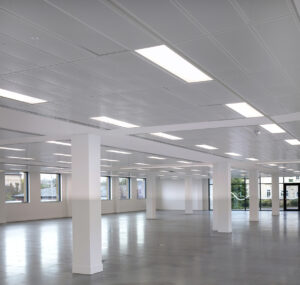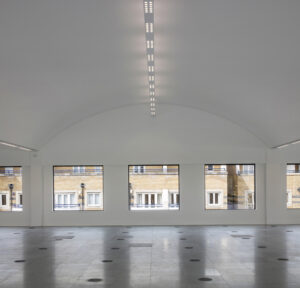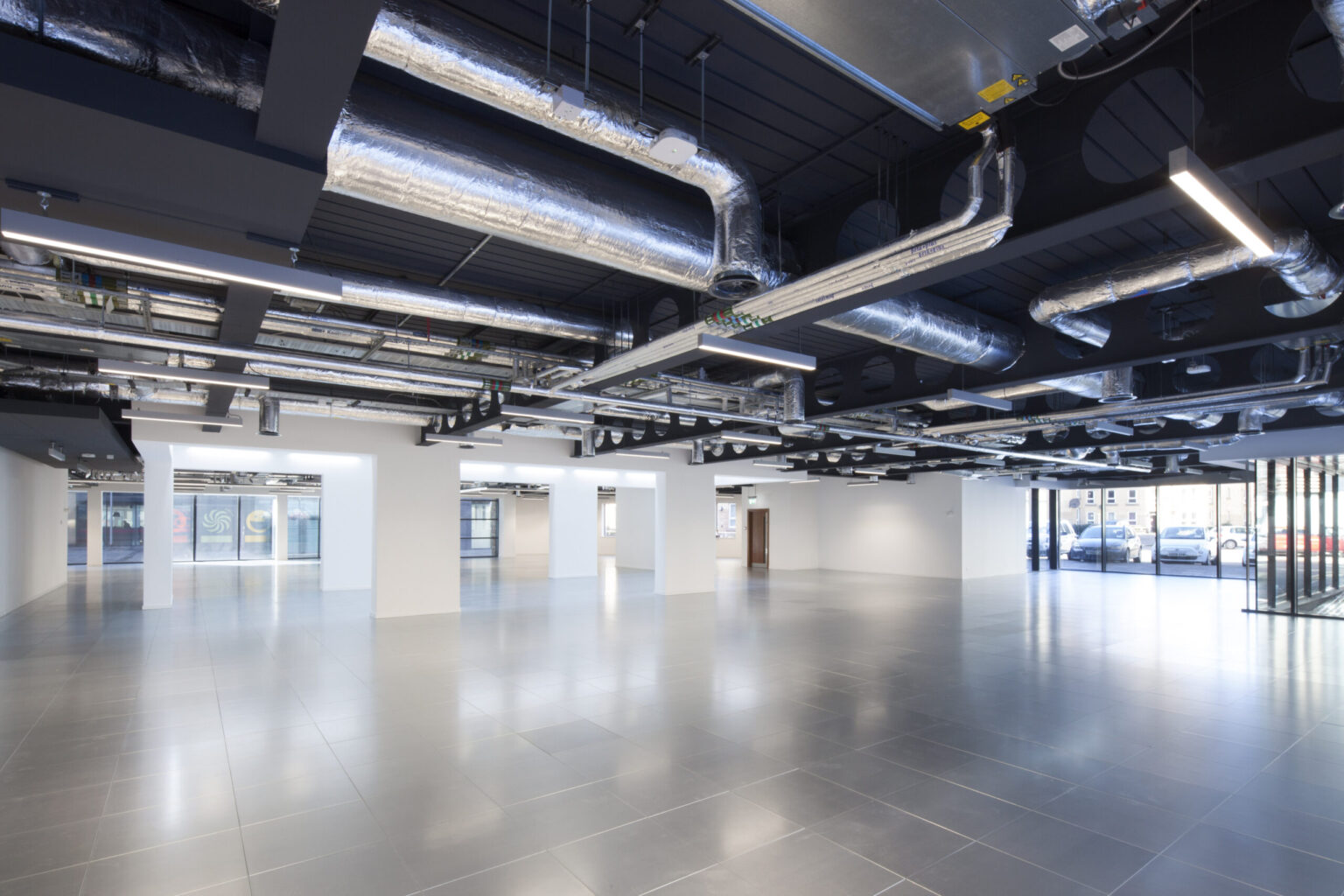“Read the lease. And understand it!”
That’s the advice from Trident Building Consultancy’s dilapidation experts Roger Watts and Joshua Pearce to tenants who want to avoid being hit with a surprise – and often large – bill at the end of their lease.
That bill, which can run to hundreds of thousands of pounds, is for their dilapidations liability – the work required to return a building to a state required by the lease, most often to enable the landlord to re-market it.
In regard to office space – a core market for Trident – this generally means taking the interior back to an open plan Cat A state; a blank canvas of galvanised floor panels, white walls and ceiling lights laid out to suit that open plan layout.
 It can be a huge amount of work – and cost – especially if the tenant has fitted complicated air conditioning units, bespoke IT systems, and other business-critical infrastructure specific to their industry.
It can be a huge amount of work – and cost – especially if the tenant has fitted complicated air conditioning units, bespoke IT systems, and other business-critical infrastructure specific to their industry.
But all too often, tenants are not aware of their responsibilities when it comes to dilapidations, Roger says.
In many cases, they simply close the door on the building they have worked from at the end of the lease and leave in the state it was in on their last day there.
But this can be a costly mistake, Roger added.
He said: “A lease is a contract like many others.
“But it could be 60 pages long. How many people will read it to the end? Not many in our experience.
“But you have to read and you have to understand what your responsibilities are as a tenant at the end of the lease, because that way you can plan. If you don’t know what they are, you’re going to be in for a big shock and potentially a big bill.”
Roger added another area that can cause confusion when it comes to a tenant’s responsibilities is a Schedule of Condition.
A Schedule of Condition means the tenant has to hand the building back in the same condition as when they took it over, but far too many companies interpret this as not having to do anything to it at all.
“That’s not what it says,” he said.
“The tenant doesn’t have to hand it back any better than when they got it, but that doesn’t mean they’re off the hook completely. Then they wonder why they have problems at the end of the lease when they’ve done absolutely nothing for 10 years and the property has deteriorated.”
But it is not just failing to act that can lead to problems, particularly when it comes to the office sector where quirky interior design, breakout spaces, and innovative storage solutions fight for space.
“The ironic thing is the more you do to the building the day you walk through the door in terms of putting partitions in it, meeting rooms and the like, the more it’s going cost you to leave,” Roger said.
“The simple fact is it takes more work and more money to return such a building back to the blank canvas.”
So, what are a tenant’s responsibilities when it comes to dilapidations, and how are these managed?
Joshua Pearce, Senior Associate Director and dilapidations expert at Trident, said heads of claim usually refer to three specific areas; repair; reinstatement; redecoration and statutory compliance.
In cases where tenants have read their lease and do understand their responsibilities, they will usually start planning their lease exit months in advance and fund the work related to complying with their lease themselves.
In this case, there is no negotiating over price – if the tenant procures wisely, and undertakes quality work, the dilapidations process will have been carried out in a cost-effective way for the tenant and will be complete once the tenant leaves or shortly after, enabling the landlord to market the property quickly.
But according to Roger, such scenarios, while optimum for both parties, are rare.
Far more common is for landlords to call in Joshua and Roger to conduct dilapidations inspections and prepare a Terminal Schedule of Dilapidations. This identifies all the breaches of the lease and therefore all the work the tenant has to undertake to comply with their lease.
Along with this comes detailed estimates or in certain cases tendered costs to undertake work, which the tenant must foot.
Unsurprisingly, this can lead to some disagreements between the two parties.
Joshua said: “We go in and assess the costs. It might be £100,000 to remove the internal fittings, another £100,000 to remove the IT infrastructure and air conditioning, and before you know it, the tenant is facing a claim of quarter of a million pounds.
“If you didn’t read the lease in the first place, then this is going to come as an unwelcome surprise.
“So, it generally kicks off a period of negotiation where our opposite number working for the tenant will start to look for ways to lower that cost.
 “There can be quite a bit of to and fro before a figure is finally agreed and the two parties part ways.”
“There can be quite a bit of to and fro before a figure is finally agreed and the two parties part ways.”
Often in dispute is the need to fully return the building to the original state, particularly when the tenant has occupied it for a long period of time and modernised the building over the years.
A classic example would be the heating system. When a long-standing tenant moved into a building it might have had a gas-fired boiler, which the tenant might have updated. However, if the original lease stated that once the tenant leaves, the building must return to its original condition, where does their responsibility lie?
Joshua said: “In a case like this, my opposite number would immediately contest it. There’s no way anyone would install a gas boiler these days, they would install an air-source heat pump or similar. They would argue any responsibility on their part is superseded by the landlord’s responsibility and refuse to fund it.
“It’s in these areas were a lot of the negotiations take place – what is the tenant’s responsibility and what is the landlords. The older the lease, the harder it is to determine this.”
However, as environmental concerns have grown over recent years, particularly in relation to materials going to landfill and minimise waste, tenants and landlords are increasingly beginning to work more closely together on so-called ‘green dilaps’.
This is where the tenant and landlord agree that to remove and dispose of the interior fitout would be environmentally damaging and decide to retain either part or all of it.
Of course, this will only happen if landlord feels they will be able to market the property to a new tenant with the existing internal fitout. But as companies become more aware of their own environmental obligations, many prefer to avoid the unnecessary wastage of taking a building back to a blank canvas only to fit it out again with new equipment.
“This marks a shift in how landlords are thinking, that they don’t always have to return it to Category A office space,” Joshua said.
The last resort, if tenants and landlords really don’t agree, is litigation. But according to Roger, cases rarely get this far due to the associated costs.
Where this can happen, however, is in relation to very specific points of law rather than general claims which can be hard to bring.
Roger said: “Where there’s an issue in dispute between the parties which they can’t resolve like cost of replacement cladding, for example, and one party says it could be repaired and the other party says it is unrepairable and needs replacing, this might lead to litigation.
“This is because the cost of carrying out the work is so high. But such disputes are always over very specific points of law where each party believes they have a case. General claims are messy, much harder to prove, and take far longer to hear so these are very rarely brought.”
To avoid the possibility of legal action, Joshua returned to his earlier advice – read the lease and understand your responsibilities.
“No one, when getting the keys to a new business premises, is thinking about the day they leave,” he said.
“But it is vital to understand the provision for dilapidations at an early stage so you can plan. After all, you never know when you might be leaving. Fast growth might mean you outgrow the building quicker than you think.
“Economic turbulence might lead to you having to downsize, and this is the worst time to receive a large and unexpected claim.
“So, understanding your responsibilities when you leave an office or other business premises is vital for future planning.
“So few companies actually consider this and that is almost always to their detriment. Don’t be one of those.”
To find out more about our dilapidations services contact Joshua at joshua.pearce@tridentbc.com or Roger at roger.watts@tridentbc.com.




